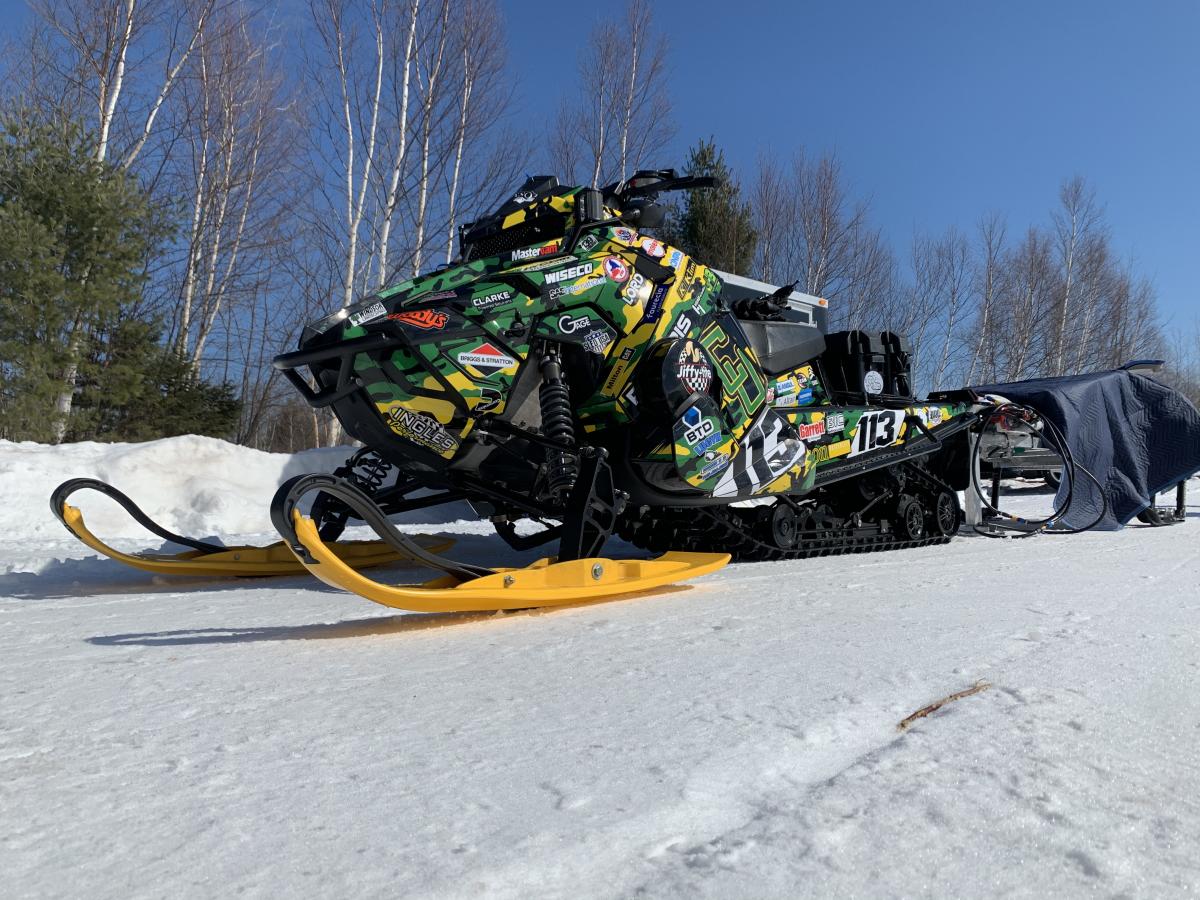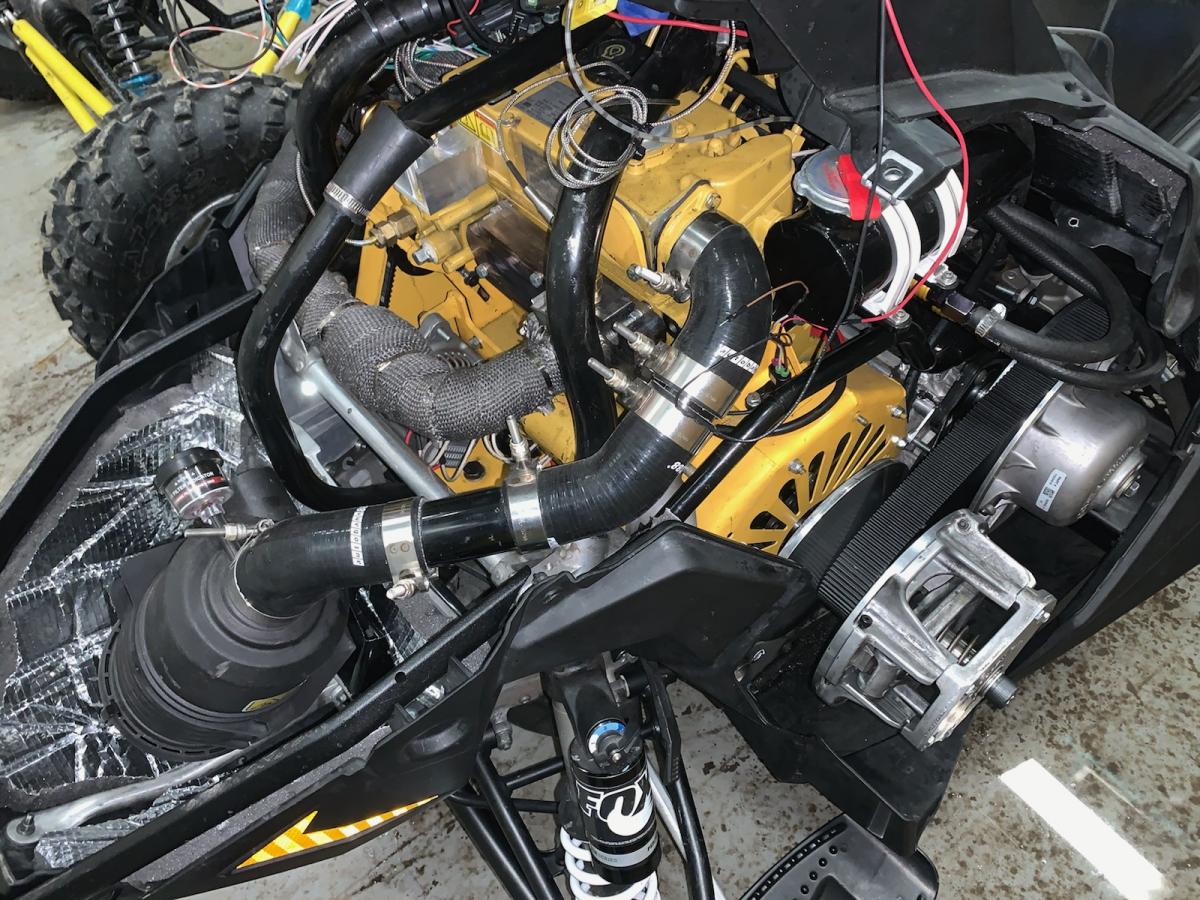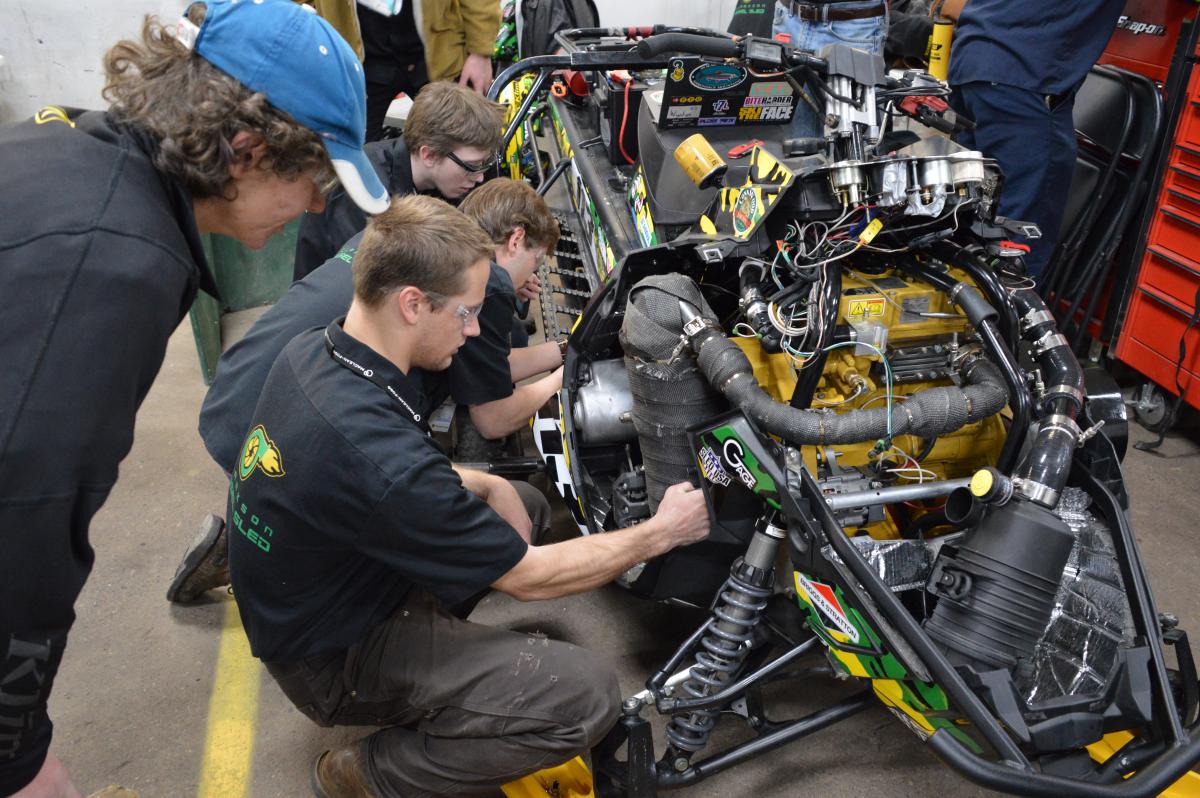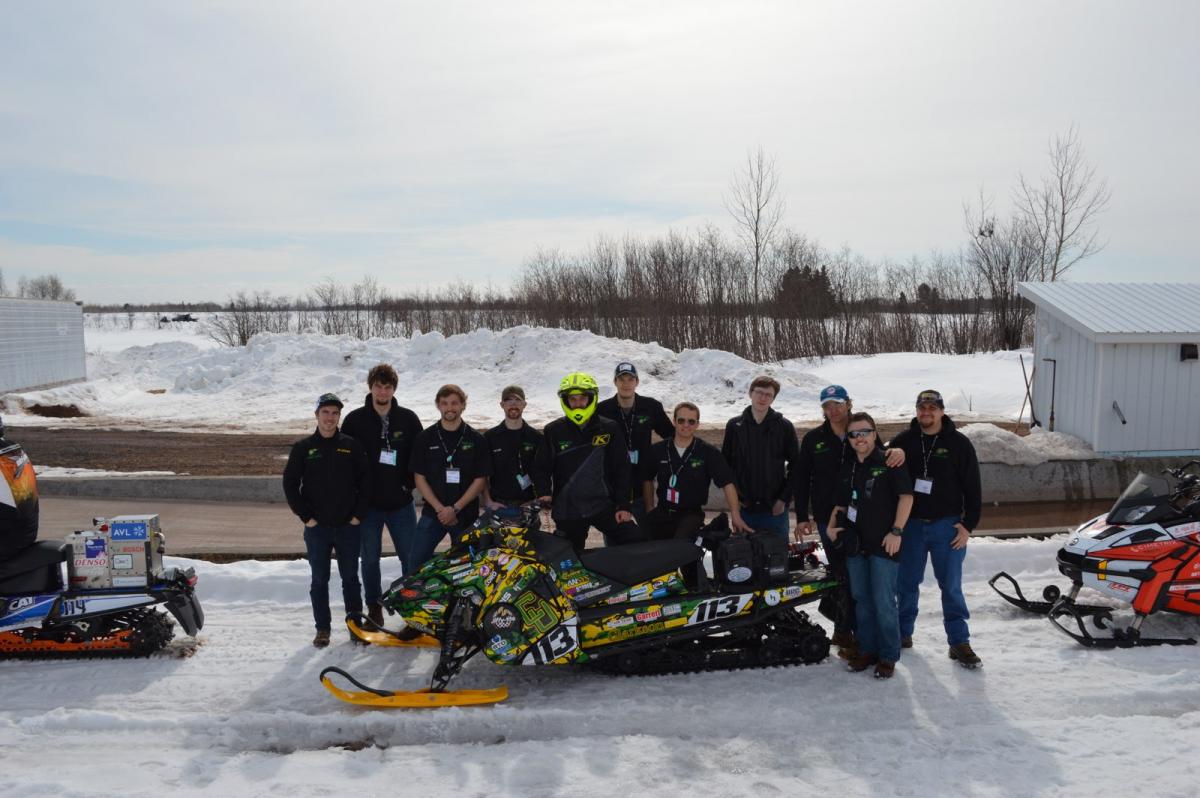Exit this form
Are you sure you want to quit this form?
Integrating an industrial diesel engine into a gas-powered snowmobile chassis in order to reduce noise and eliminate emissions while maintaining or boosting speed and performance cannot be done properly without measuring extremely complex geometries with state-of-the-art technologies to get an accurate foundation and use the correct tolerances.
Replacing the whole support structure, changing the stock oil pan, or using a dry sump oil system appear to be costly and complex options that could lead to potential reliability issues. Consequently, engineers must find a way to design the engine bay (around the engine) to fit the industrial diesel engine without having to alter the oil pan design. To do so, the measurement of the current engine, engine mounting, and engine bay is a crucial step. However, it must be done with very accurate measuring instruments because many extreme tight clearances might be involved in the design.

Measuring every angle and every surface of the casting is mandatory to modify the structural foundation of the snowmobile in order to fit the engine while maintaining the structural integrity of the chassis. Engineers need to know the correct tolerances between the engine and the engine bay. Unfortunately, all of these tolerances cannot be obtained accurately with traditional tools.
Calipers and traditional measuring tools either cannot access specific areas of the surfaces that need to be measured or provide data that is accurate enough for the task at hand. Since the engine bay contains fairly complex geometries, a more versatile AND accurate measuring solution is required in order to capture data that would highlight the right tolerances and provide the proper clearance for a quick and efficient fit.
Pursuing the avenue of measuring the complex geometry of the engine bay with traditional tools could lead to compounding errors that could require several iterations of design and fabrication in order to get all of the mounting components exactly right. To reduce the number of iterations involved in the course of design, the right measuring solutions must be prioritized. This way, precious time is saved and the other stages of development can occur in their logical sequence.
The best possible way to avoid changing the oil pan or using a dry sump oil system is to design a support structure for the engine that would fit as tightly as possible given the complex geometry of the engine bay. Without a doubt, 3D scanning technology is the solution for capturing data that would highlight the right tolerances and provide the proper clearance for a quick and efficient fit.
Accuracy is demonstrated by the level of comfort and confidence that engineers have with some extremely tight clearances in the CAD model, which turned out to be perfectly fine once the engine mounting was fabricated.


The high level of detail provided by the high-resolution cameras for geometry is an important feature for the design and development teams. The scan quality is essential in order to see the discrepancies between the scanned and actual surfaces of the components.
Versatility is made possible with advanced optical technologies and limitless scanning volumes. Thanks to that, 3D scanners can measure any part, regardless of size, shape, material, surface finish, and complexity. Speed is defined with the instant mesh feature, where the generated mesh is already lightened and processed, ready to be seamlessly integrated into CAD or 3D printing software.
Metrology-grade 3D scanners, such as the HandySCAN 3D or the Go!SCAN 3D, as well as the software platforms VXModel and Polyworks, are good examples of these high-resolution, accurate, versatile, and fast scanning solutions.
In addition to a clean re-engineering, the diverse results that engineers get while testing their new design is the ultimate proof of their realization. 3D scanning technologies contribute to the following benefits, all of which are essential to being victorious in a clean snowmobile competition:
The Clarkson SAE Clean Snowmobile Team involves approximately 20 students from a wide variety of undergraduate programs into student projects for engineering experience and design. Their latest project was to design and build a diesel-powered snowmobile in one year, which is an impressive feat. With a little help from Polaris Industries, the team received a 2020 Polaris Titan Adventure chassis to start the modifications. The redesign also involved choosing a new diesel engine: the Caterpillar C1.1 liter 3-cylinder, 4-stroke diesel. The chassis was then transported to Montreal where Creaform Metrology Services performed (as a sponsor) 3D scanning to allow SolidWorks modeling of the engine bay.
“The way our team did this project would not have been possible without the Creaform 3D scan of the engine bay and a step-file of the engine that we received from Clarke Powered Solutions. The model geometry was incredibly accurate, which enabled several instances of tight clearances to be successful once the snowmobile was fabricated,” says Shawn Schneider, President of Clarkson SAE Clean Snowmobile.
The Clarkson SAE Clean Snowmobile Team returned from Michigan Technological University earlier this year touting a first-place finish in the Diesel Utility Class at the annual SAE Clean Snowmobile Challenge. “To do exactly what we did without a scan of the engine bay would have been nearly impossible,” adds Mr. Schneider.
The team can now continue developing and improving their robust design in CAD for the next four competitions until a new chassis is required in 2025. Having a reliable foundation to build off will inevitably enable creativity and innovation in the future.

